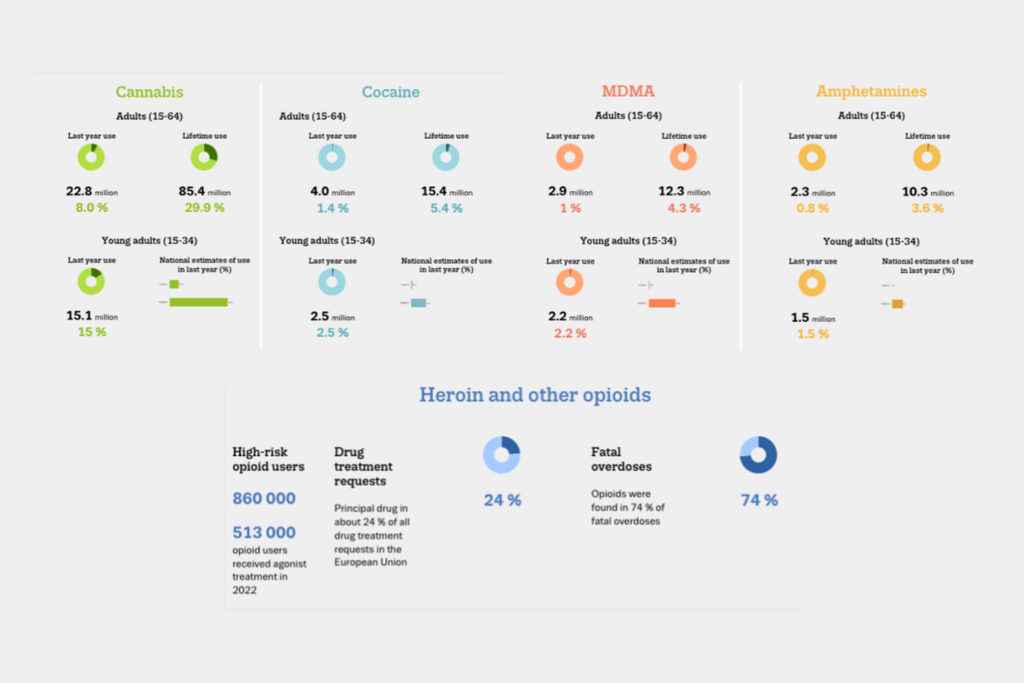
Following our insightful exploration in “Cocaine Analysis – Challenges and Opportunities“, we delve deeper into a critical aspect that plays a pivotal role in the global cocaine trade: the cutting agents. These substances, mixed with cocaine to increase volume, alter potency, or both, significantly impact the drug’s purity, efficacy, and the health risks to users. This blog aims to shed light on the various cutting agents used, their effects on cocaine, and the curious case of why paracetamol, despite its availability and physical properties, is seldom used for this purpose.
What Qualifies a Substance to be Cut with Cocaine?
The selection of a cutting agent is not arbitrary; rather, it requires a meticulous consideration of various factors to ensure profitability, concealment, and market viability. Firstly, the ideal cutting agent must possess properties that complement the physical and chemical characteristics of cocaine. It should seamlessly integrate with the drug, maintaining its appearance, texture, and overall aesthetic appeal. Tasteless and odorless attributes are paramount, as any discernible deviation could arouse suspicion among users and compromise the product’s marketability.
Furthermore, the chosen cutting agent should be readily available in large quantities at minimal cost, allowing traffickers to maximize profit margins without significant financial investment. Accessibility is key, as reliance on obscure or restricted substances could hinder operational efficiency and increase the risk of detection by law enforcement agencies.
Beyond mere compatibility and accessibility, the safety profile of the cutting agent plays a pivotal role in its selection. While the primary objective is to enhance profitability, traffickers must navigate the delicate balance between economic gain and potential health hazards posed to consumers. Substances with known toxicological effects or high risk of adverse reactions are generally avoided to mitigate liability and safeguard against legal repercussions.
In essence, the ideal cutting agent for cocaine embodies a trifecta of characteristics: seamless integration with the drug, cost-effectiveness, and minimal health risks. It is this careful orchestration of factors that distinguishes the mundane from the malicious in the world of adulterants, underscoring the calculated nature of drug trafficking operations.
The Complex World of Cutting Agents
Cutting agents, also known as adulterants, are substances added to cocaine to extend profits and modify the drug’s effects. Their use introduces a layer of complexity to cocaine’s already harmful nature, altering its potency, increasing health risks, and complicating efforts to analyze and detect the drug.
Commonly Encountered Cutting Agents
- Lactose: A milk sugar that is often used for its availability and non-reactivity, lactose is a benign cutting agent that dilutes cocaine without adding much risk.
- Laundry Detergent: Surprisingly, some traffickers use laundry detergent for its ability to mimic the appearance of cocaine, despite its potential to cause severe damage if ingested or inhaled.
- Laxatives: Utilized for their ability to pass through the body without full absorption, laxatives can dangerously accelerate the drug’s effects.
- Caffeine: Beyond its stimulant properties, caffeine can increase cocaine’s perceived potency, offering a cheap way to extend the product.
- Boric Acid: A compound sometimes used for its preservative qualities, boric acid can introduce toxic reactions, particularly when ingested.
- Local Anesthetics like Procaine: Mimicking cocaine’s numbing effect, substances like procaine can deceive users into overestimating the drug’s purity.
- Creatine: Commonly found in fitness supplements, creatine is used to bulk up cocaine, taking advantage of its harmless appearance and granular texture.
- Sucrose: Simple table sugar is occasionally used as a cutting agent for its sweetness and texture, altering the cocaine’s taste and consistency.
- And more.
The Rarity of Paracetamol as a Cutting Agent
Despite its commonality and white, powdery appearance, paracetamol (acetaminophen) is seldom used to cut cocaine. This section explores the reasons behind this choice, highlighting the drug’s physical and chemical properties, its interaction with other substances, and the potential health risks that make it less favorable compared to other adulterants.
Paracetamol, commonly known for its pain-relieving properties, presents several drawbacks when considered as a cutting agent for cocaine. Firstly, paracetamol possesses a distinct taste and odor that could potentially alter the purity of the cocaine and make it easily detectable. Traffickers often prefer cutting agents that are tasteless and odorless to maintain the illusion of purity. Moreover, the chemical composition of paracetamol differs significantly from cocaine, potentially causing adverse reactions or reducing the drug’s effectiveness. Paracetamol also has well-known health risks, particularly concerning liver damage, which could lead to increased scrutiny or suspicion among users. These factors combined make paracetamol a less desirable option for traffickers compared to other cutting agents available on the market.
Detection and Analysis Challenges
Identifying and quantifying the myriad cutting agents in cocaine presents significant challenges to forensic analysis. The evolving nature of these substances requires adaptable and sophisticated detection methods. Techniques such as infrared spectroscopy, liquid chromatography-mass spectrometry (LC-MS), and nuclear magnetic resonance (NMR) spectroscopy are at the forefront of these efforts, offering insights into the complex mixtures found in street cocaine.
Health Risks Associated with Cutting Agents
The health implications of cutting agents vary widely, from relatively benign to potentially lethal. For instance, the ingestion of cocaine cut with laundry detergent can lead to severe gastrointestinal and respiratory issues, while the addition of boric acid raises the risk of poisoning. Each adulterant introduces its own set of dangers, compounding the already significant risks associated with cocaine use.
Global Impact of Cocaine Cutting Agents
The practice of adulterating cocaine with various cutting agents has far-reaching implications, affecting not only individual health but also global drug markets and law enforcement strategies. Understanding the types and effects of these substances is crucial for policymakers, health professionals, and law enforcement agencies as they navigate the challenges of the international cocaine trade.
Conclusion
The shadowy world of cocaine cutting agents is a testament to the lengths traffickers will go to maximize their profits, often at the expense of user health and safety. This deeper dive into the array of substances used to adulterate cocaine underscores the complexity of combating this aspect of the drug trade. As we continue to uncover the realities of these practices, our strategies for detection, intervention, and education must evolve in tandem, aiming to mitigate the harms of cocaine use and trafficking.
To explore more about spectroscopy and discover the full capabilities of NIRLAB’s technology, we invite you to read our other informative articles, here. Additionally, for personalized inquiries, please don’t hesitate to reach out to us at contact@nirlab.com.
NIRLAB // Just Truth


